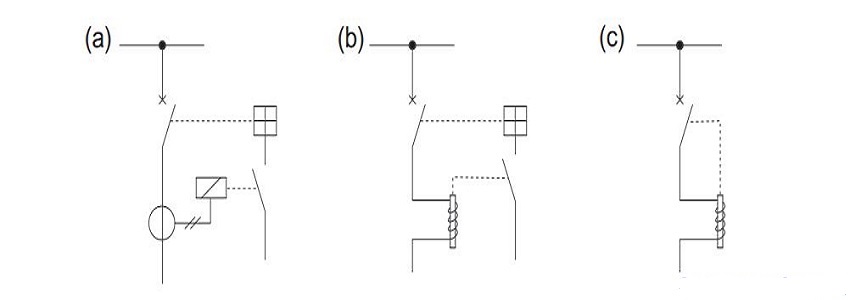
Trip circuits between the protection device and the circuit breaker consist of wiring ,auxiliary relays and circuits and trip coil. Auxiliary power is also needed for the operation of the breaker or switch, usually available directly from the current transducer, from a separate AC voltage source or from a capacitor release unit. The trip signal thus does not activate the switchgear directly, but through a relay, which initiates the actual trip release by control of the trip coil or by release of pneumatic, hydraulic or spring coil control devices. This kind of trip release is called secondary relay release, indicated in Figure a.
Protective systems supervising the operation of circuit breakers directly or by an auxiliary relay are called primary trip- relays or primary relays, as represented in Figure b and c. They are used today only in MV systems. Their disadvantages are the coupling between high voltage circuit and secondary technology, the difficulty of maintenance checking during operation, the lack of adaptation of different currents and voltages to the desired measuring system, and increased thermal and dynamic stress on the protective device.



